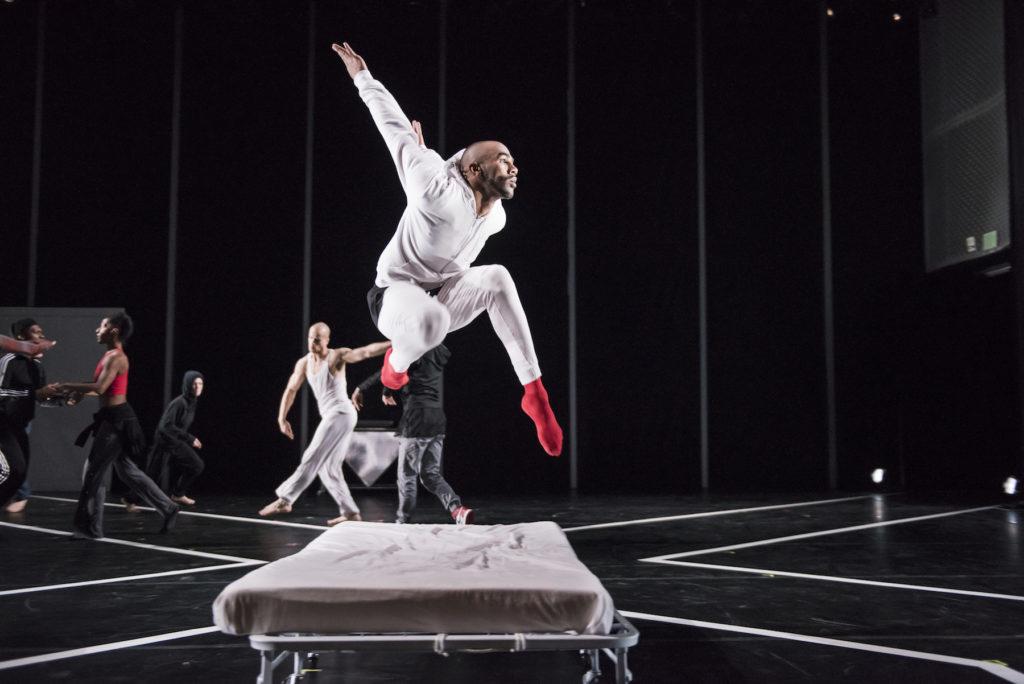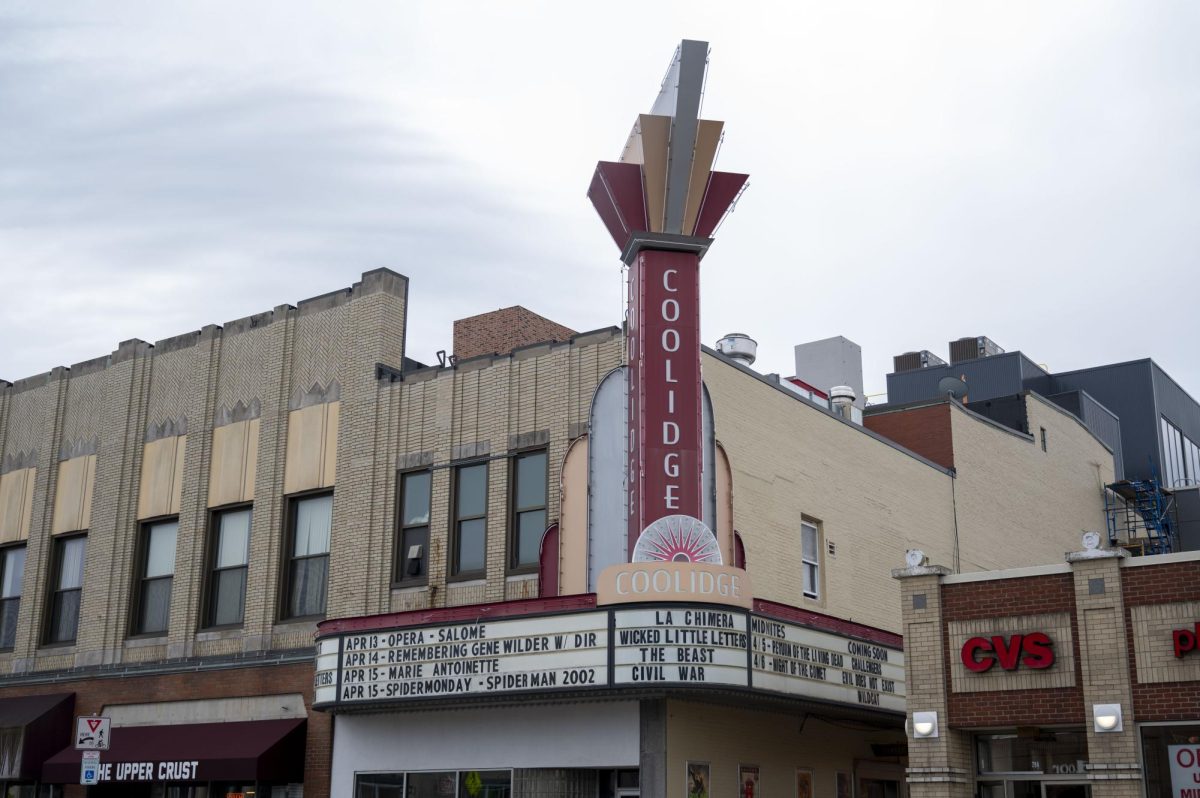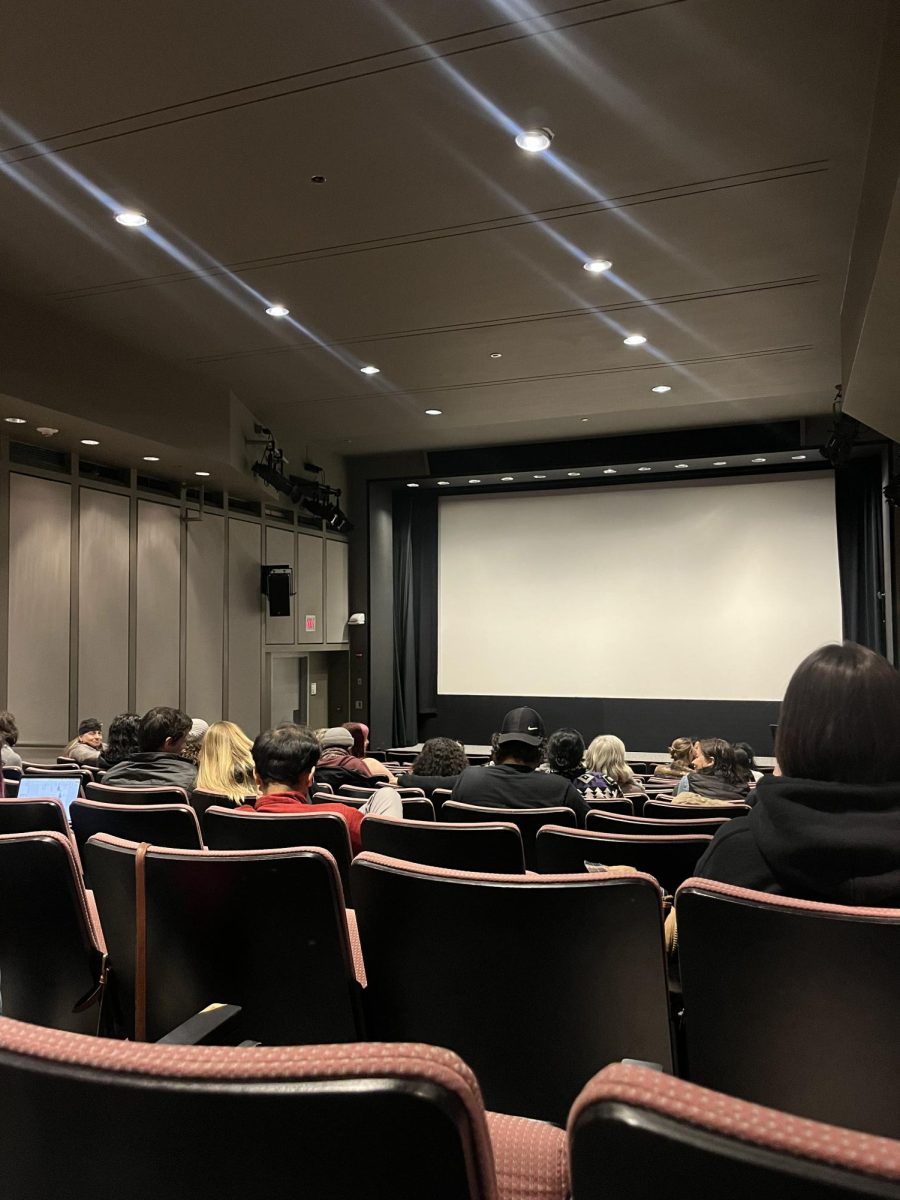By Tierney Banco, news correspondent
The Institute of Conteyporary Art (ICA) once again welcomed National Medal of Arts laureate and choreographer Bill T. Jones for the U.S. premiere of “A Letter to My Nephew.” The third part of the Bill T. Jones/Arnie Zane Company’s “Anthology” trilogy, the dance is based on the life experiences of Jones’ relatives, particularly his nephew, Lance.
“Nephew” is an abstract, hip-hop fusion dance piece that recreates a gritty street scene, complete with violence, sexuality and other worldly torments, including drugs and the constant search for belonging and safety. The piece was performed three times at the ICA this weekend.
Jones, who won Tony awards for his work on “Fela!” and “Spring Awakening,” addressed the crowd in a 30-minute talk before the 2 p.m. performance began on Sunday, Nov. 13. He spoke about the creation of the show, as well as of his nephew.
“I knew that I wanted to have a central image be my nephew on a bed like Frida Kahlo,” Jones said. “A fragile bed becomes a source of so much and the idea that he would be in a 3D projection of struggle in our country of violence, of refugee situation, and all this other stuff that would happen in between the lines.”
Lance was involved in the project, writing some of the music heard in the show. A recurring image throughout sees the Lance character returning to the agony of his hospital bed.
“He’s a black gay man in his 40s who has lived a very rough life,” Jones said during his speech. “He’s a handsome model who was a ballet dancer, who got involved with drugs and sex trade and he was now paralyzed from the waist down.”
Rena Butler, one of the dancers performing in the piece, spoke about the basic concept behind the dancers’ characters.
“We are all many different facets of Bill’s nephew, Lance, and his personality,” Butler said. “My character’s very sexual [and] has a homosexual vibe to him/her.”
Butler described the creation process as difficult for Jones, as he had to delve into personal family issues.
“Bill got very frustrated in the studio because it was so far out of his world,” Butler said. “Knowing all of this about someone very dear to him, [he] was very conflicted, didn’t know exactly how to reach him. He was shocked to hear all these stories about your little nephew grown up into a man having all those experiences. I think it was very difficult for Bill sometimes because he didn’t want to go there in the piece.”
Jones also spoke of the struggle with putting his nephew’s troubles on stage.
“We were always hoping art would save him,” he said. “If you take ballet you won’t be caught up in drugs or getting involved in teenage pregnancies—well, guess what?”
The choreographer, who was awarded a MacArthur “Genius” Grant in 1994, said the violent status of the country was also a central focus when creating the show.
“At the time, two things were happening,” Jones said. “One thing was that the Syrian refugee crisis had reached a peak. But also, there was an onslaught of men being killed, black men being killed, starting with Ferguson. So I wanted to write to my nephew with those two points of view.”
Janet Wong, associate director of New York Arts Live, a partner company to the Bill T. Jones/Arnie Zane company, described the trilogy as a “collage” of images.
“There are connections between all of the pieces [of the trilogy] and if you compare all three parts, they are linked in certain ways even if the stories are different,” Wong said during the pre-performance talk.
The titular letter is projected across the stage throughout the performance, mirroring the dancers’ movements, with video projections designed by Wong. The various shapes made by the performers, along with the strong, urban beat made the street setting both realistic and imaginative.
Before the crowd entered the theater on Sunday, Jones asked everyone not to scrutinize the details of the piece.
“Just relax, be free with it,” he said. “What could this mean? What they are doing? It is a collage. A collage of tensions and a collage of analogies. I think it is more the sum of its parts. Just enjoy.”
Photo Courtesy Liza Voll, ICA














